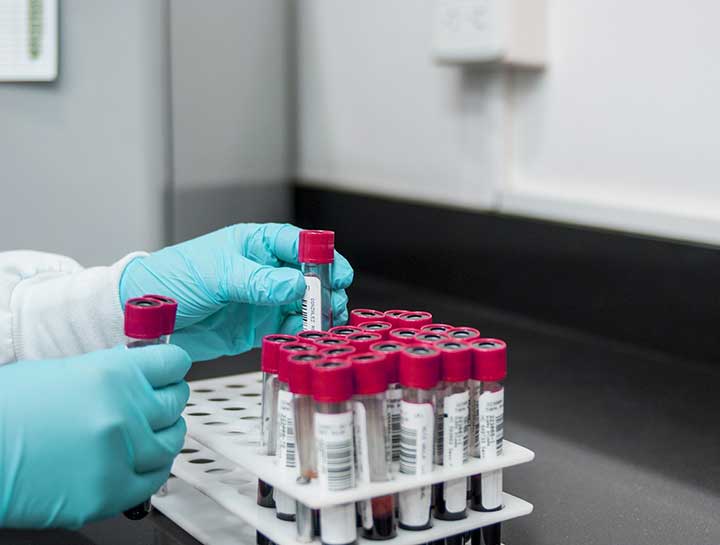Screenings
Early Tests Help Manage Your Pets Needs
Screening is an important component of your pet’s overall healthcare program and is critical for early detection of diseases. While your pet may never encounter any serious issues, breed specific screening can help you give your pet a better future if a health concern does arise.
There are different screening tests recommended for different breeds, as the type and severity of inherited genetic disease varies among breeds.
Three prevalent diseases are seen in dogs and two common health issues in cats, as well as the screening tests used for each.
Dilated Cardiomyopathy (DCM)
DCM causes degeneration of the heart muscle and is often seen in Boxers, Cocker Spaniels, Dobermans and giant breeds. An EKG is used for screening, which usually starts at age four. If the EKG comes back abnormal, an ultrasound is taken and, depending on those results, follow up ultrasounds may be needed periodically.
With DCM, the heart can become like a stretched out balloon, losing its elasticity and strength. If caught early, medications can be used to improve quality of life by helping the heart muscle to function properly. Without early detection, the heart is more likely to be in poorer condition and medications may or may not be effective.
Hemangiosarcoma (HSA)
HSA is an aggressive cancer that arises from the blood vessels. It spreads rapidly and is common in the spleen, liver and right atrium. The breeds most at risk are: Boxers, English Setters, German Shepherds, Golden Retrievers, Great Danes, Labrador Retrievers and Pointers.
Annual screenings generally begin at age seven with an abdominal ultrasound to check the spleen and liver. Early detection can prevent the disease from spreading and, if detected early enough, the cancer can be surgically removed.
Glaucoma
Glaucoma increases the intraocular pressure in the eye, can be painful and even result in blindness. This condition can develop on its own or as a secondary health concern. It’s seen in several breeds, including: Akitas, Alaskan Malamutes, Basset Hounds, Beagles, Boston Terriers, Chihuahuas, Chows, Cocker Spaniels, Great Danes, Poodles, Shar-Peis and Siberian Huskies.
Screening should begin at four years of age with tonometry, a test that measures inner eye pressure. Early detection is vital, as symptoms don’t usually begin until the eye pressure is extremely high and when blindness may have already occurred.
Since glaucoma can result from another health condition, the testing could also be important for early detection of other health issues.
Hyperthyroidism and Hypertension in Cats
Hyperthyroidism, caused by the overproduction of thyroid hormones, is often seen in cats. Weight loss and hyperactivity are common symptoms and hypertension frequently develops as a result.
Blood work and blood pressure are used for screening starting at age 10. Early detection can help correct the problem before other conditions occur. Hypertension is essential to detect and control early because it can result in sudden blindness, sometimes occurring overnight.
Hyperthyroidism and hypertension are both controlled with medication. An oral medication is available and, for cats that dislike taking medicine, there’s a medicated gel that can be put on the inner ear flap instead.

